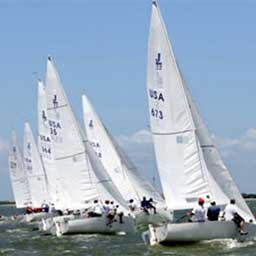What is the safest legal way to carry an Inflatable Lifejacket with you on a commercial airline?
- Check the air carrier’s website, including all connecting air carriers of your round trip to see if the airline(s) allows you to bring the CO2 Cylinder on their airplanes. For those that allow it, become familiar if they allow it in carry-on, or checked bags only. About one-half of airlines risk management departments have decided that your CO2 Cylinder is too dangerous to carry on their planes. If you cannot carry them, leave the CO2 Cylinders behind, call ahead to a chandlery at your destination and have them set aside a CO2 Cylinder, or two, for your arrival. Bring your Inflatable lifejacket leaving the CO2 Cylinders at home.
- When checking in with your airline, regardless whether checking your bags or carrying them on, you are required to announce that you have a hazardous material, describe the CO2 Cylinders and the Inflatable lifejacket and explain you are following the airlines requirements as stated on their website (it helps to print off the pages from their websites and have them in hand). Be sure to unscrew the cylinder (required), put it together with your spare cylinder.
Any compressed gas cylinder is considered a “hazardous material” according to the FAA. Your CO2 Cylinder can explode in a fire injuring passengers, crew, or rescuers. It can inflate the lifejacket while baggage handlers are moving bags, shifting bags in the cargo hold injuring the baggage handler. And there could be subversive uses of passenger CO2 Cylinders that are carried onto an airplane (versus those on lifejacket's under the seats on airplanes that were inspected by the FAA upon installation).
The difficulty is that there are at least three different standards, which are not equal. The Transportation Safety Administration, The Federal Aviation Administration, and each Air Carrier.
- TSA STANDARD: Self-Inflating Life Jacket- Up to 2 in life vests and 2 spares. The spares must accompany the life vests and be presented as one unit. Both Carry-On and Checked.
- FAA STANDARD: A life jacket containing two nonflammable gas cartridges plus two spare cartridges in carry-on or checked baggage.
- CHECK YOUR AIR CARRIER AND CONNECTING AIR CARRIER’S WEBSITE: They may ban CO2 Cylinders; They may allow them in checked baggage only; or, They may allow them as carry-on and checked baggage.
Those who intentionally violate the hazardous material regulations in the U.S. are subject to a criminal penalty of up to $500,000 and/or five years imprisonment.
Our own Safety at Sea Committee Member and Safety At Sea Seminar Moderator, Bruce Brown, shares his tips for travel –
- I photocopy the TSA Guideline document (TSA STANDARD)
- I laminate it and keep it in the baggage I am carrying containing the lifejacket and spare cylinder.
- I include my cell phone number on the document to allow TSA, FAA or Air Carrier to call me if there is a question.
- I tell the airline (at the counter to check baggage) that I am carrying an inflatable lifejacket and spare cylinder. I show them a copy of their website page that allows the CO2 Cylinders. I have checked my bag with the lifejacket inside and have carried it on.









